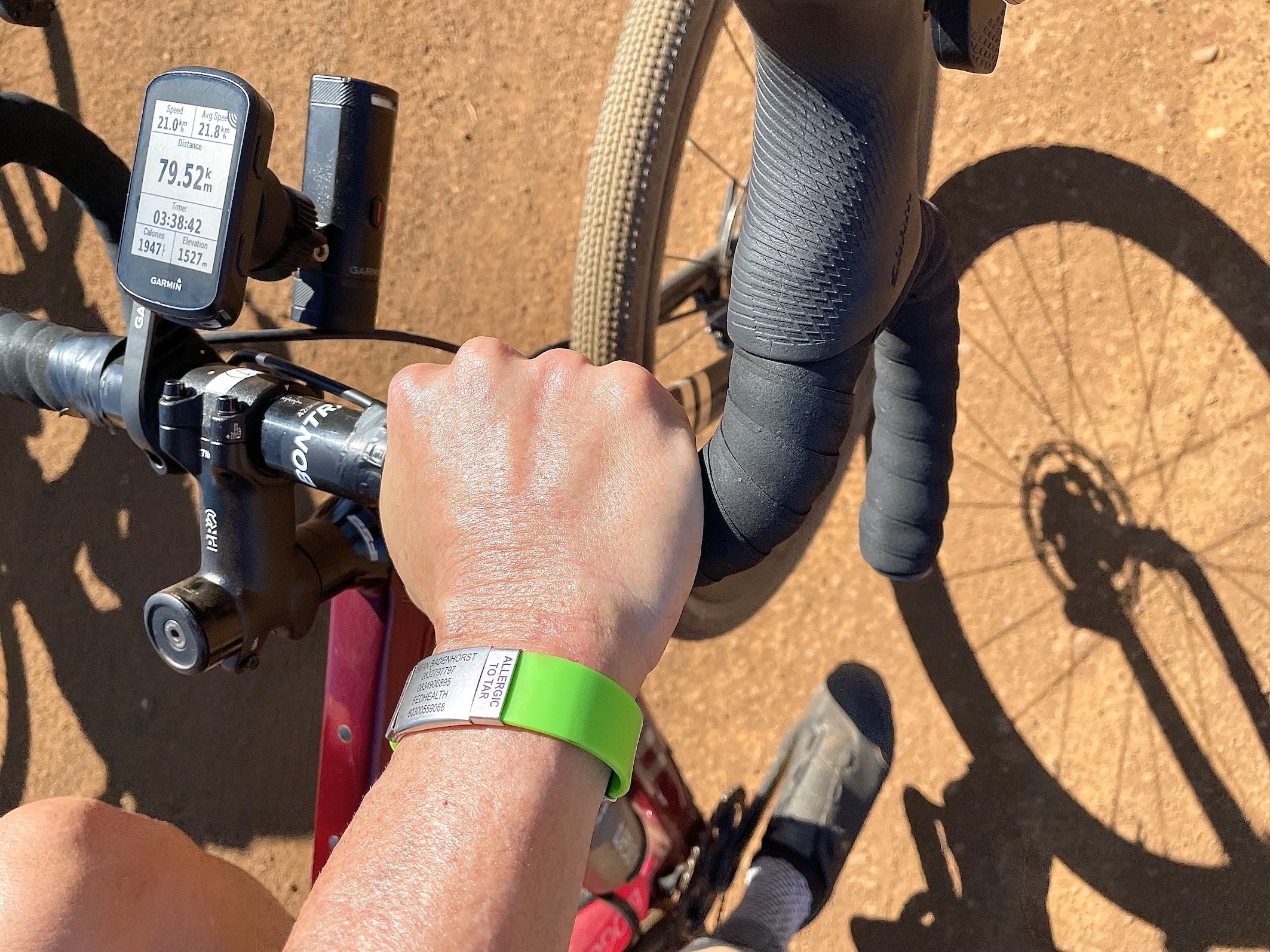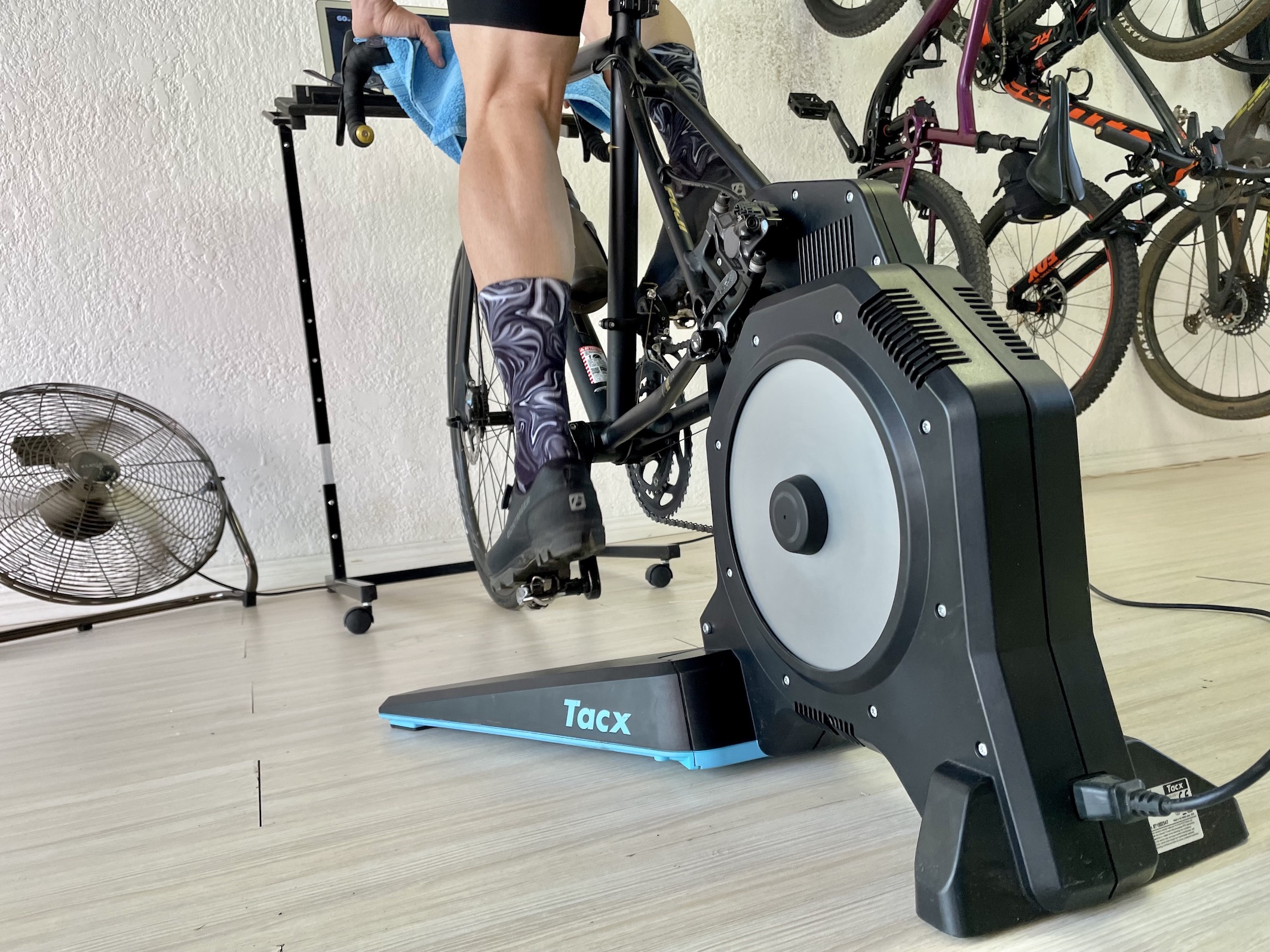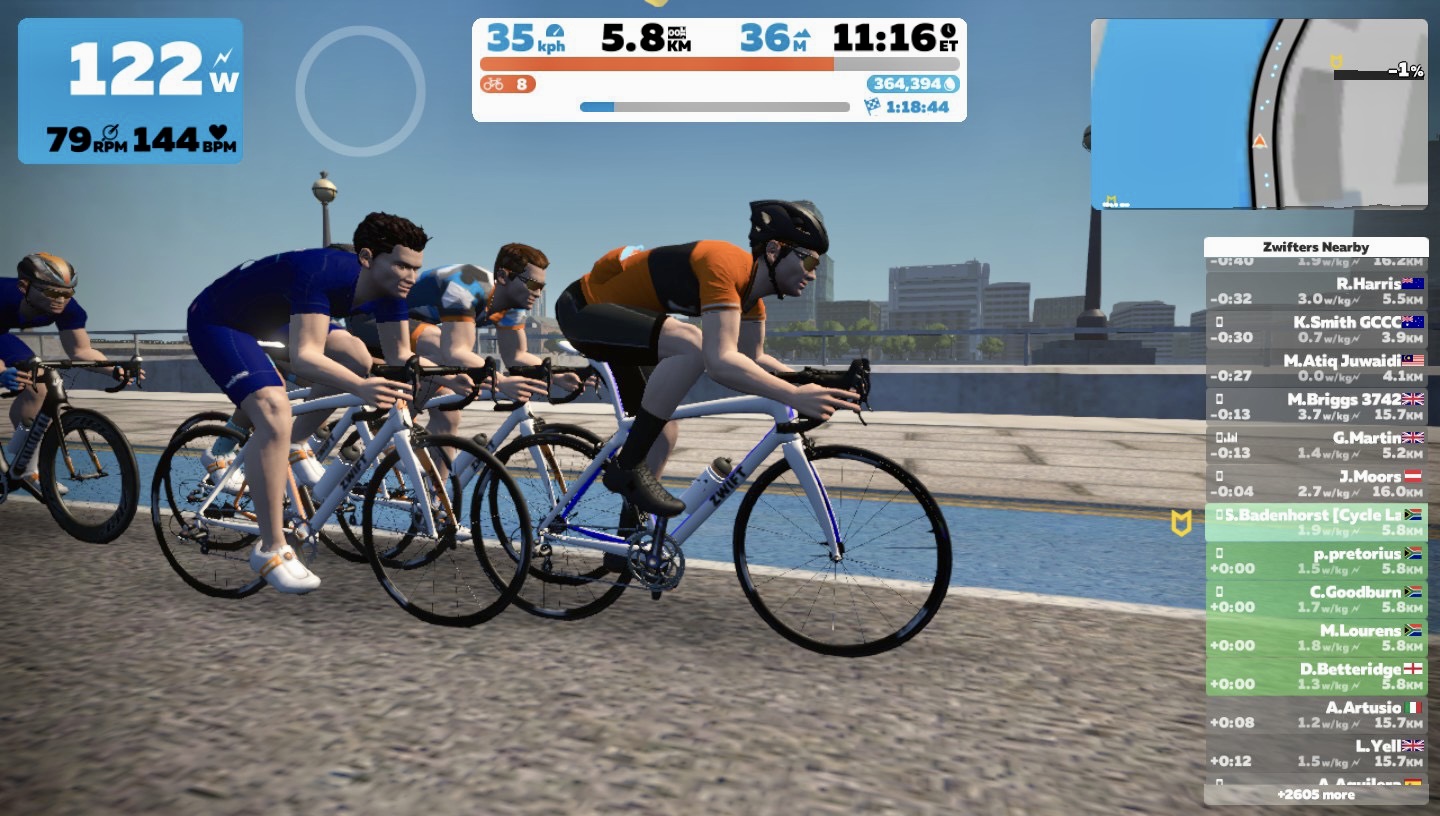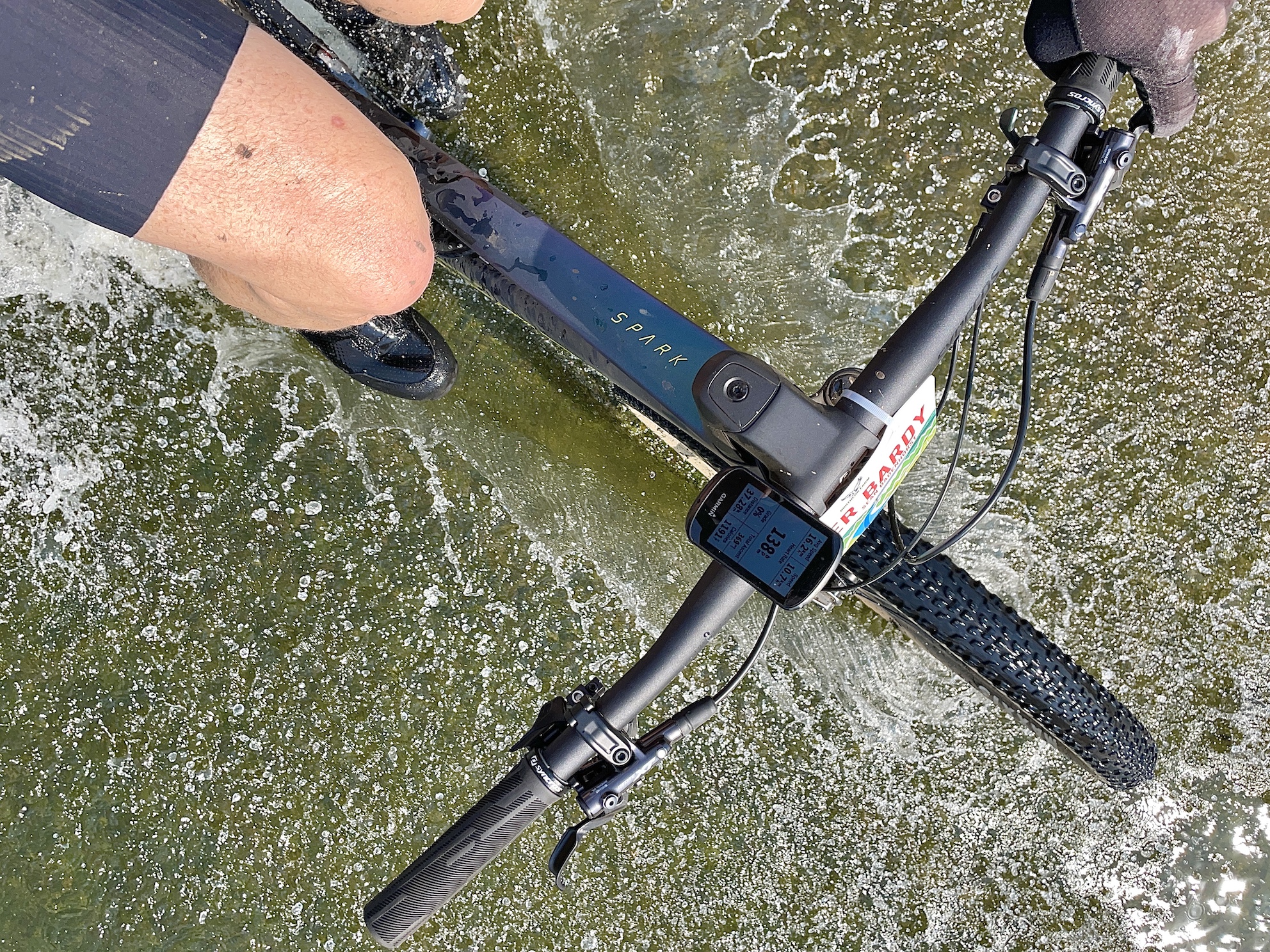In Part 3 of our four-part reveal of the 2021 South African Mountain Biking Survey, presented by Garmin, we look at the performance segment of the survey. The 13 questions were designed to find out more about how mountain bikers measure their training/racing performance and which brands they choose for GPS devices, home trainers, workout apps and more. Where relevant, we have included previous-year stats for comparison.
The 2021 South African Mountain Bike Survey, presented by Garmin attracted a total of 3093 respondents. Of the that number, 2749 answered every one of the 53 questions (not every question relates to everyone). This is an impressive sample size and gives excellent insight into the preferences of the South African mountain bike market.
Do you wear a GPS smart watch to monitor your riding performance?
| 2021 | 2020 | |
| Yes | 71.44% | 63.14% |
| No | 28.56% | 36.86% |
GPS Smart watches have become popular due to their convenience and the fact that they have so many cycling-specific features. They’re also ‘lifestyle-measuring’ devices, offering stats on sleep quality, weather and recovery – and they tell the time, like a regular watch. Interesting to see a more than 8% jump in the number that use a GPS Smart watch to monitor their mountain biking performance over the previous year.
If yes, what brand and model do you currently use?
| 2021 | 2020 | |
| Garmin | 74.05% | 70.86% |
| Apple Watch | 7.62% | 7.50% |
| Suunto | 5.27% | 6.49% |
| Polar | 4.29% | 5.43% |
| Samsung | 2.55% | 3.41% |
| Huawei | 2.04% | 1.96% |
| FitBit | 0.87% | 1.06% |
| Wahoo | 0.87% | 0.33% |
| TomTom | 0.40% | 0.67% |
| Other | 2.04% | 2.29% |
Garmin remains the leader in this category and has strengthened its position at the outright leader over 2020. Garmin’s Fenix is essentially the benchmark in smart watches for cyclists, while its Vivoactive (Active Lifestyle) and Forerunner (Committed Athlete) models also showed significant popularity in our survey. Besides a small drop in market share for Suunto and Polar, there wasn’t really much change among the other brands from 2020 to 2021. At total of 1 964 answered this question.
Do you use a traditional non-GPS cycling computer or a GPS cycling computer to measure your performance whilst you ride (that’s mounted to your handlebar)?
| Response | 2021 | 2020 |
| A traditional non-GPS computer | 6.62% | 9.30% |
| A GPS cycling computer | 61.95% | 54.56% |
| Neither | 31.43% | 36.13% |
The traditional non-GPS computer really is becoming quite marginal with GPS computer gaining a 7% increase in 12 months. The 31.43% that said ‘neither’, are likely mostly using a cycling-aligned smart watch, which measures most of what a handlebar-mounted device measures, as well as off-the-bike measurement, such as sleep, recovery and other activities.
If yes, what brand and model do you currently use?
| Cycling GPS brand | 2021 | 2020 |
| Garmin | 72.93% | 71.53% |
| Wahoo | 7.42% | 6.48% |
| Polar | 3.38% | 2.76% |
| Cateye | 2.76% | 2.76% |
| Ryder | 1.94% | 1.35% |
| Giant | 1.94% | 1.88% |
| Sigma | 1.69% | 1.82% |
| Lezyne | 1.64% | 1.94% |
| Bryton | 1.59% | 3.12% |
| Other | 4.71% | 6.36% |
Garmin is incredibly dominant again here, but it is the brand that essentially created the cycling GPS category in the early 2000s. Small increases noted for Wahoo and Polar. A total of 1 954 answered this question.
Which data metrics are most important to you?
| Metrics | 2021 | 2020 |
| Distance, speed & time | 92.95% | 93.08% |
| Heart rate | 82.57% | 80.03% |
| Average speed | 54.58% | 56.62% |
| Accumulated ascent | 44.35% | 43.27% |
| Time of day | 29.99% | 31.80% |
| Cadence | 32.98% | 29.03% |
| Calories burned | 28.49% | 27.96% |
| Navigation capabilities | 25.58% | 25.00% |
| Elevation above sea level | 21.45% | 21.63% |
| Slope gradient | 19.72% | 17.71% |
| Power metrics | 21.52% | 16.42% |
| Air temperature | 15.13% | 16.16% |
| Smart notifications | 13.10% | 14.64% |
| Advanced physiological metrics (VO2 max, training effect etc) | 13.14% | 10.95% |
| Safety features | 12.14% | 10.50% |
| Training plans & workouts | 11.95% | 10.02% |
| All of the above | 8.50% | 8.65% |
Survey-takers could choose as many as they felt necessary. This does give an indication what the priority features are on cycling-specific devices for South African mountain bikers.

Do you use a Garmin Varia Radar to warn you of motor vehicles approaching from behind?
| Yes | 6.29% |
| No | 91.58% |
| I ride with others that have it and I connect to theirs | 1.32% |
| Other | 0.81% |
After testing this product in 2021, we actually can’t see how anyone that regularly rides on public roads would not invest in one! Here’s our review. The ‘Other’ was mainly comments saying they intend buying one, it’s the best thing they have every bought and they wish they could afford one
Do you currently use a power meter?
| Response | 2021 | 2020 |
| Yes | 14.41% | 12.69% |
| No | 85.59% | 87.31% |
Due to their price, power meters remain a nice-to-have for most, but those committed to improving their racing performance will prioritise measuring their power, both in training and races. Top racers use their power numbers to pace themselves in races as power is a far better measure of current effort than heart rate. There’s been a gradual increase in power meter investment in the past 12 months. Garmin’s new Rally ‘Power Pedals’ have added to the choices and are already quite popular.
Do you train indoors to achieve cycling fitness/strength?
| Response | 2021 | 2020 | 2019 |
| Yes, mostly on my home trainer | 49.62% | 43.85% | 35.11% |
| Yes, mostly at a power-training studio | 2.51% | 2.42% | 5.91% |
| Yes, mostly on the power-measured bike at my gym | 10.11% | 10.10% | 22.03% |
| No | 37.76% | 43.64% | 36.96% |
That’s quite a jump from 2019 to 2021 on home trainers! No doubt largely influenced by the South African government’s stringent lockdown to manage the coronavirus, which obviously also affected gyms and studios, which had to close temporarily.

Did the Covid-19 lockdown motivate you to buy a home trainer?
| Response | 2021 | 2020 |
| Yes | 30.01% | 20.64% |
| No | 36.96% | 40.87% |
| I already had one | 29.54% | 36.00% |
| I already had one but did buy a better one | 3.49% | 2.49% |
Home trainer popularity continues to grow…
If you use a home trainer, which do you have?
| Response | 2021 | 2020 | 2019 |
| Basic manual resistance trainer | 35.64% | 48.19% | 42.70% |
| Smart trainer | 64.36% | 51.81% | 57.30% |
Smart trainers generally range in price from R9000 to R32000 (not including the smart bikes, which are more expensive). Basic manual resistance trainers, which, with some relatively cheap modification, can be connected to popular training app, Zwift, generally cost from R1500 to R4000.
If you use a home trainer, which brand and model do you have?
| Home trainer brand | 2021 | 2020 | 2019 |
| Wahoo | 38.19% | 33.54% | 39.46% |
| Tacx | 19.99% | 18.29% | 17.01% |
| Giant | 9.55% | 13.31% | 11.34% |
| Saris/CycleOps | 6.70% | 7.56% | 9.98% |
| Elite | 6.64% | 6.65% | 3.40% |
| Trojan | 4.30% | 2.58% | 3.85% |
| Spinning bike | 4.63% | 1.42% | 0.91% |
| Raleigh | 3.85% | 1.80% | 1.59% |
| Wattbike | 2.12% | 1.93% | 3.40% |
| Other/Unknown | 4.02% | 12.15% | 7.93.% |
Wahoo continued to gain market share and maintain a strong lead in a relatively uncrowded segment. Tacx increased slightly in second place with Giant and Saris/Cycle Ops both losing some ground. A total of 1 791 answered this question.
Whilst on your home trainer, do you use a cycling training/workout app?
| Response | 2021 | 2020 |
| Yes | 60.04% | 46.78% |
| No | 39.96% | 53.22% |
That’s quite a huge leap in 12 months, but not really surprising. Home trainer apps are highly engaging and really great for motivation and even competition.

If you use a cycling training/workout app, which do you use?
| Workout app | 2021 | 2020 |
| Zwift | 70.42% | 66.70% |
| Rouvy | 7.19% | 7.41% |
| TrainerRoad | 5.37% | 4.18% |
| Tacx Training | 3.86% | 3.49% |
| The Sufferfest | 3.93% | 3.49% |
| Wattbike | 1.25% | 1.71% |
| FullGaz | 0.91% | 0.87% |
| Wahoo | 0.66% | 0.70% |
| Kinetic Fit | 0.08% | 0.70% |
| RGT Cycling | 0.76% | 0.61% |
| BKook Simulator | 0.08% | 0.26% |
| Golden Cheetah | 0.23% | 0.26% |
| Other | 5.26% | 9.62% |
No real surprise that Zwift is by far the most popular. We have used at least half of those listed here and can confirm that Zwift is certainly the most engaging and customisable. A total of 1 357 answered this question.
Did you miss Parts 1 and 2 of our four-part reveal of the 2021 South African Mountain Biking Survey, presented by Garmin? Check them out here:
Part 1 – Rider stats
Part 2 – Bike brands



